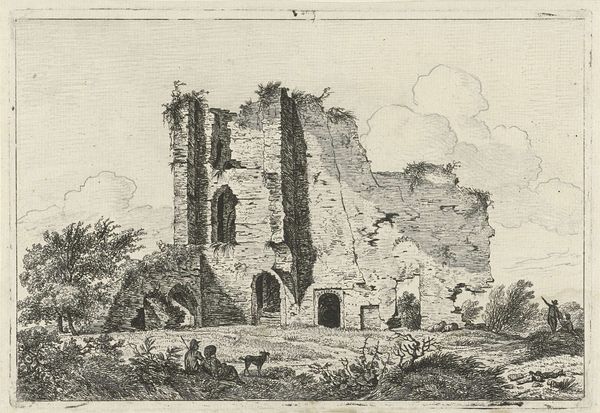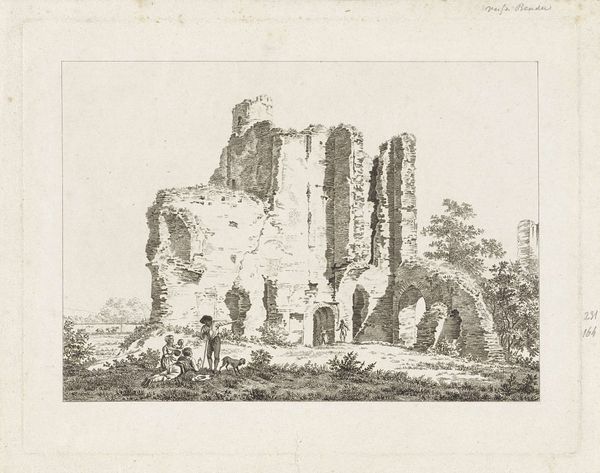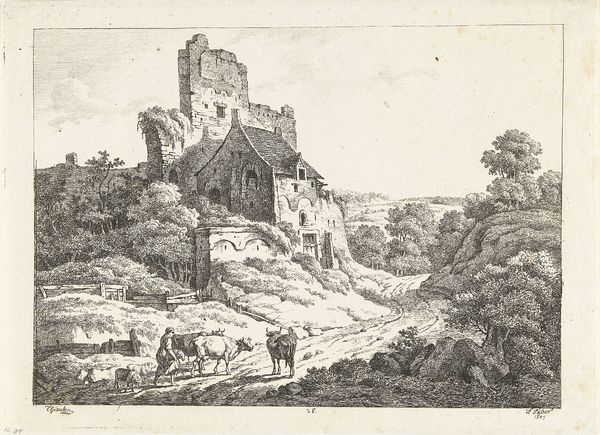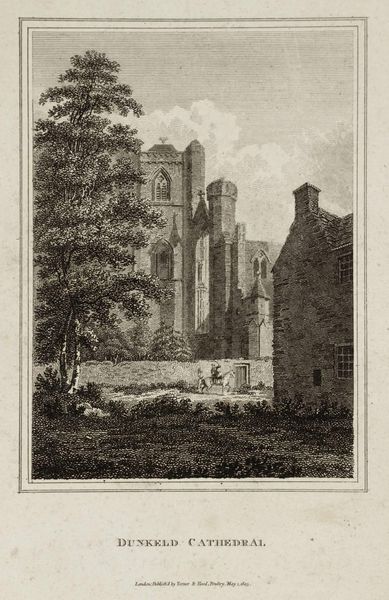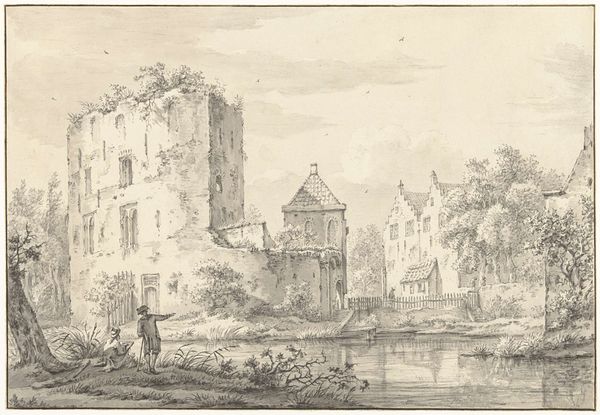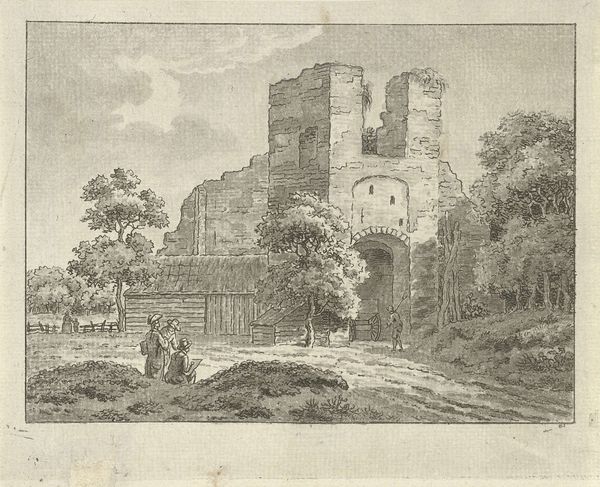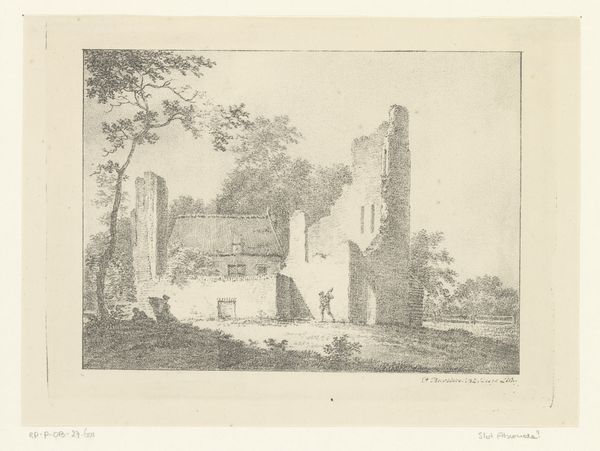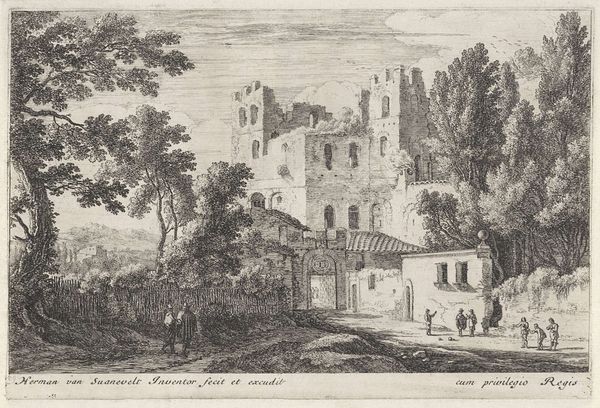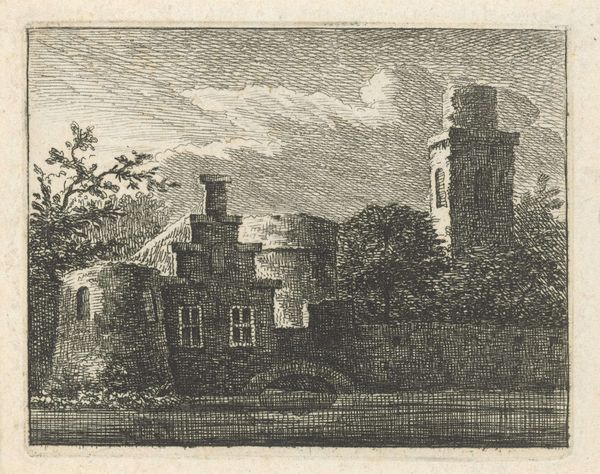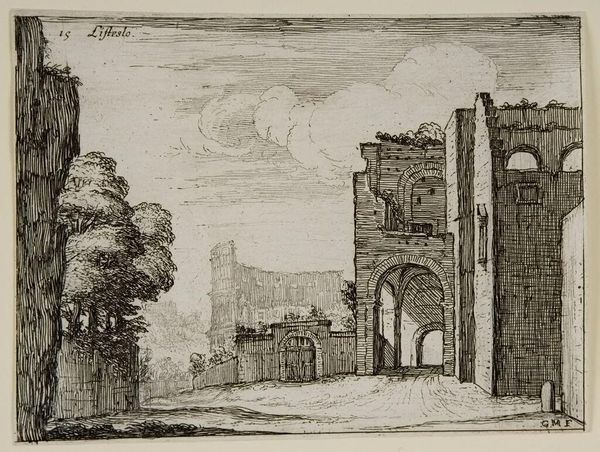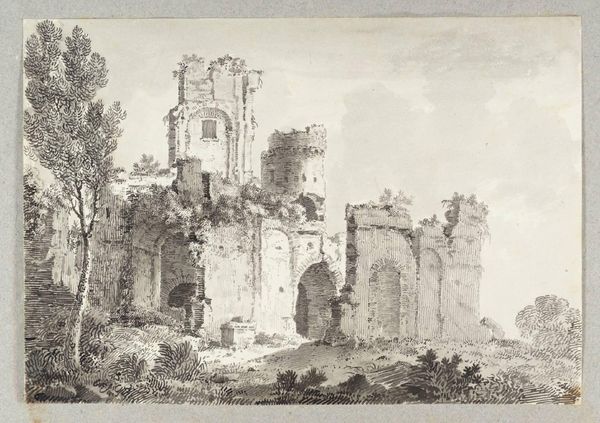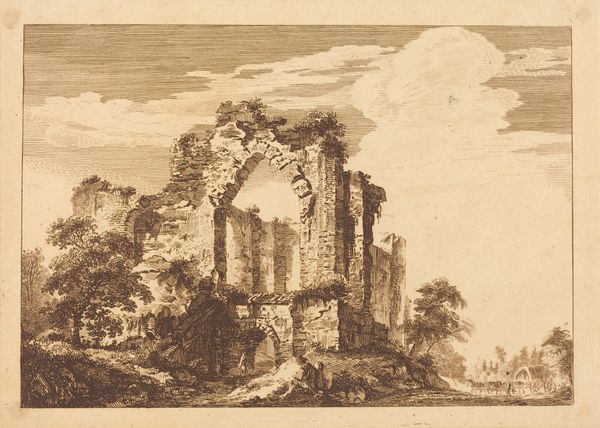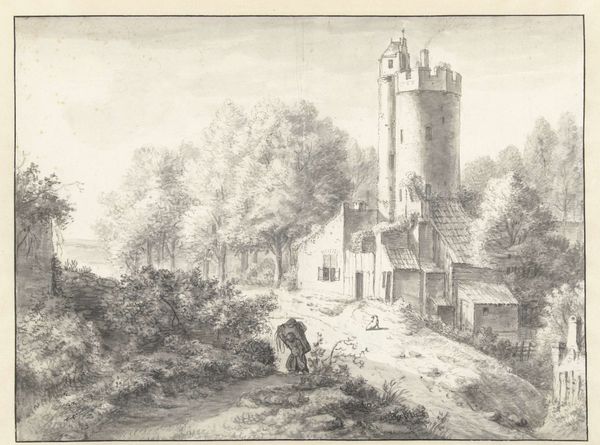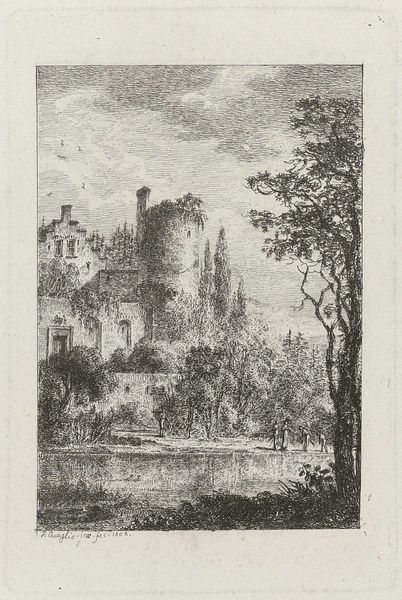
print, etching
# print
#
etching
#
old engraving style
#
landscape
#
romanticism
Dimensions: height 106 mm, width 126 mm
Copyright: Rijks Museum: Open Domain
Hermanus Fock etched this landscape with ruins in the late 18th or early 19th century. Dominating the scene, the ruined architecture embodies the transience of human achievement and the relentless march of time. Consider how, since antiquity, ruins have captivated artists and poets. The crumbling stones echo the fall of empires, the vanity of earthly power. The archway, still standing, frames a distant rider, a symbol perhaps of resilience or the continuation of life amidst decay. This motif of ruins, as seen here, reminds us of the impermanence of existence. The motif evokes a melancholic reflection on time, loss, and the cyclical nature of history. The emotional power lies in the juxtaposition of grandeur and decay, engaging our subconscious understanding of time’s passage. The cyclical progression of history shows how symbols can re-emerge, evolve, and acquire new meanings.
Comments
No comments
Be the first to comment and join the conversation on the ultimate creative platform.
